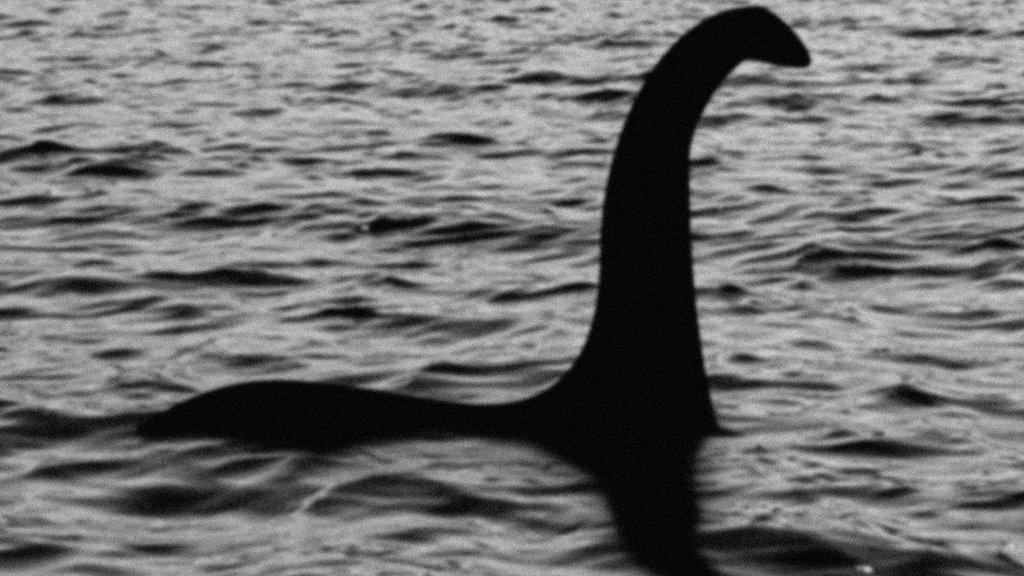Hundreds join huge search for Loch Ness Monster
- Published

Volunteer Caroline McNamara in front of a yellow fibreglass submarine that was used in a search of Loch Ness in 1969
A search for the Loch Ness Monster, billed as the biggest Nessie hunt in more than 50 years, has been taking place in the Scottish Highlands.
A hundred volunteers helped record natural - and any unusual - sights on Loch Ness from vantage points on land.
Almost 300 have signed up to monitor a live stream from the search, which is taking place on Saturday and Sunday.
Stories of a monster have existed for centuries but it is 90 years since the modern myth of Nessie began.
In April 1933, hotel manageress Aldie Mackay said she had seen a whale-like creature in the loch.
The Inverness Courier newspaper reported the sighting and the editor at the time, Evan Barron, suggested the creature be described as a "monster".
Since then the mystery of Nessie has inspired books, TV shows and films, as well as sustaining a major tourism industry.
This weekend's search has been organised by the Loch Ness Centre in Drumnadrochit and a volunteer research team called Loch Ness Exploration.

Boats carrying acoustic listening equipment were taking part in the search
Loch Ness Centre general manager Paul Nixon insisted it was more than a PR stunt.
"There are a hundred volunteers lining the banks of Loch Ness today, all on a quest to find some answers to what is the Loch Ness Monster," he said.
"Some of the more recent sightings that I've seen are sonar contacts - showing objects in the water at depth.
"The biggest one I've seen is an object the size of a transit van, which hasn't been explained to me what that was. It wasn't there when we went back."
Drones fitted with infrared cameras have been flown over the loch, and a hydrophone is being used to detect unusual underwater sounds.
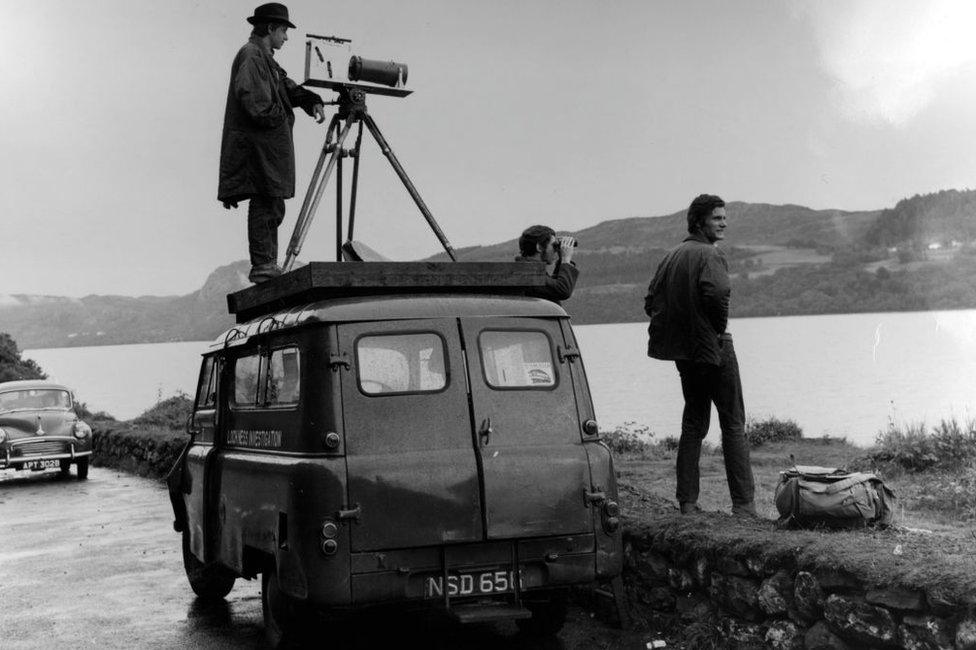
A study of the loch in 1968
The sheer size of the loch which extends over 36km (23 miles)and is more than 200m (650ft) deep in places makes exploration a challenge.
It can hold more water - 7,452 million cubic metres - than all English and Welsh lakes together.
Alan McKenna, of Loch Ness Exploration, told BBC Radio's Good Morning Scotland programme: "We are looking for breaks in the surface and asking volunteers to record all manner of natural behaviour on the loch."
He said the loch could play tricks on people's eyes and mind.
"Not every ripple or wave is a beastie. Some of those can be explained, but there are handful that cannot," he added.
The famous "surgeon's photo"of the monster is now thought to be a hoax but the fascination with Nessie endures
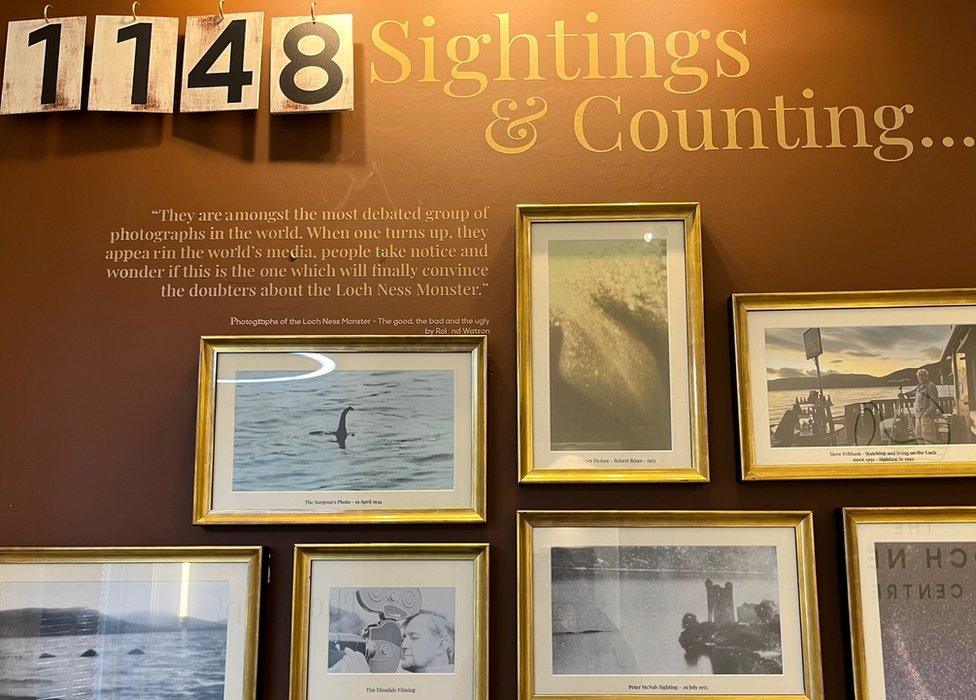
The Loch Ness Centre documents some of the best known monster "sightings"
Organisers said the effort was the biggest search for the monster since the Loch Ness Investigation Bureau carried out a study in 1972.
The bureau was set up in the 1960s to find proof of a large beast in the waters.
It was wound up in 1977 after it was unsuccessful in uncovering any significant evidence for or against the existence of a monster.
The legend of Nessie dates back to the Middle Ages when Irish monk St Columba is said to have encountered a beast in the Ness, a river that flows from Loch Ness.
Previous attempts to find the monster included 1987's Operation Deepscan, when 24 boats equipped with echo sounders swept the entire length of the loch.
On three occasions something was detected that could not be immediately explained. Large debris was one of the explanations offered for the "contacts".
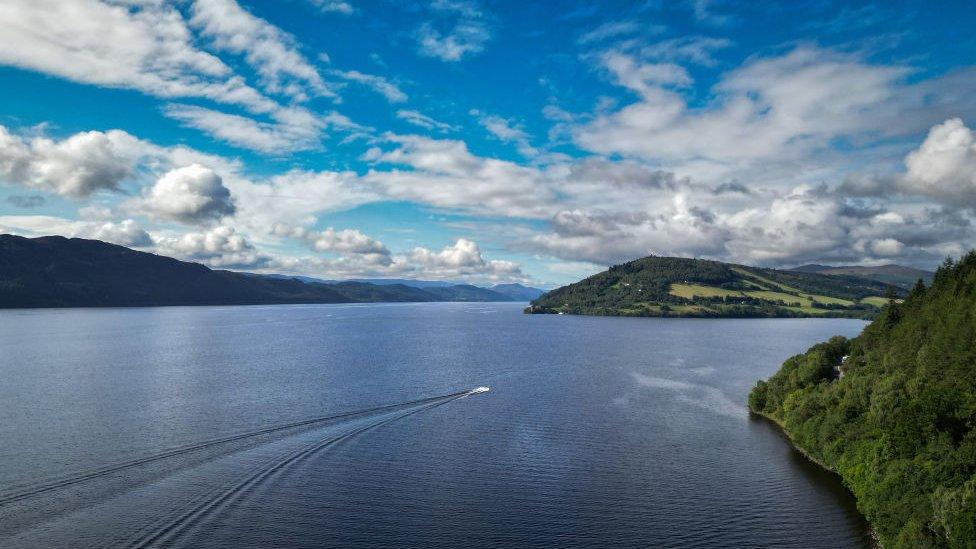
Loch Ness can hold more water than all the lakes in England and Wales together
In 2019, scientists said the creatures behind repeated sightings of the fabled Loch Ness Monster may be giant eels.
Researchers from New Zealand tried to catalogue all living species in the loch by extracting DNA from water samples.
Following analysis, the scientists ruled out the presence of large animals which were said to be behind reports of a monster.
No evidence of a prehistoric marine reptile called a plesiosaur or a large fish such as a sturgeon were found.


Ten times Nessie made a splash
The Loch Ness Monster myth is surrounded by claims and confirmed hoaxes. Ninety years on from the first "sighting" here is a rundown of 10 weird and wonderful headline-making moments.
Related topics
- Published5 August 2023
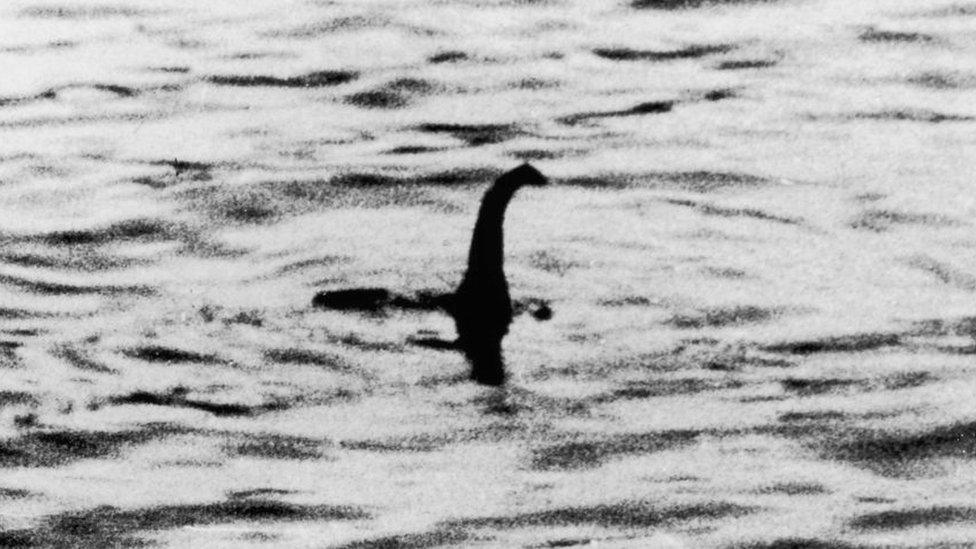
- Published12 May 2023
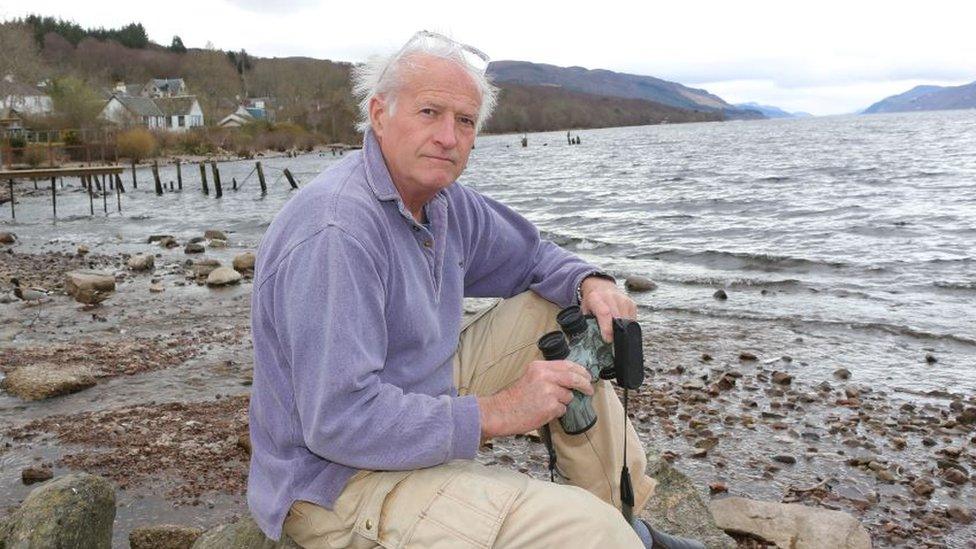
- Published5 September 2019
